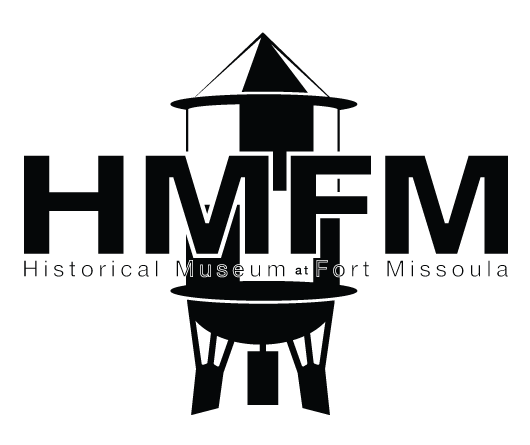Before the museum
The Historical Museum at Fort Missoula’s history began in 1965, ten years before the museum’s official opening.
After decommissioning Fort Missoula, the U.S. Military began the process of auctioning off the buildings on the property. During this process, Colonel Joseph Golden discovered that the original Non-Commissioned Officers (NCO) Quarters building from 1877 was still. He felt that the building was historically important enough to preserve, and joined forces with several other interested men to form the Fort Missoula Historical Society.

Within a few years, it became clear that the Historical Society would not be able to care for the building, and they offered the building and land to the newly established Western Montana Ghost Town Preservation Society. Don Miller, first president of the Society, accepted the offer and took on the project after paying $10 to have ownership of the building transferred to their group.
In December 1972, the City of Missoula received about 30 acres of land for a public park from the United States Bureau of Outdoor Recreation. They city worked with the Society to turn the land into a historical park and museum. The Society had already had the idea to incorporate the Quartermasters Warehouse and turn it into an indoor museum with artifacts and displays. However, the idea was put on hold almost immediately because of the extensive amount of renovations that would be needed to bring the building up to health and safety standards within the United States. Help from the city breathed new life into the plan.
The Hughes Garden Center donated two cabins, a 1918 LaFrance fire engine, and a trolley car for the newly created museum. With the help of donations from the public, work finally began on the Quartermasters Warehouse. Along with these donations, the Society worked to gain county support for a museum through a tax levy. The commissioners agreed and added a half mill levy to the budget.

The Ghost Town Preservation Society drew up the formal plans for their new museum in the spring and summer of 1973. The museum would include both indoor and outdoor components, and would showcase all aspects of Western Montana’s history. This initial vision included creating a full scale model main street that would be inhabited full time by living history interpreters. Key themes would include:
- Lewis and Clark
- Trapping, logging, and mining in the Bitterroot Valley
- Fort Missoula and its military history
- Chief Joseph’s movement through Montana with the Nez Perce after leaving the reservation in Idaho
- The training of the 25th Infantry for the Spanish-American War and World War I
- World War II and the internment of Italian prisoners
- The preservation of the cemetery and original military buildings still standing
The museum’s earliest purpose was “to collect, preserve and interpret the history of Missoula County and western Montana for the education, recreation and cultural enrichment of visitors and residents of the area.”
The museum opens
The Quartermasters Warehouse was ready and opened to the public on July 7th, 1974. Although the rest of the museum was not fully finished, 300 families had visited the new building by September. The first permanent director, Geoffrey Hunt, was hired between 1975 and 1976, and the Friends of the Fort Missoula Historical Museum was created to help the Society with the work being done at the fort.
Along with the budget provided by the county during this time, the museum would also be funded by volunteer contributions from the Fort Missoula Historical Museum Friends, a sales shop, the Fourth of July event, and the annual Carousel of Collectibles.
The city of Missoula deeded the Fort Missoula property to Missoula County in 1976, bringing the Museum’s grounds to a total of 32 acres. Work began to officially open the Fort Missoula Historical Museum by July of 1976, in time for the Fourth of July Bicentennial Celebration.
Throughout the early 1980s, the staff, volunteers, and Friends of the Fort Missoula Historical Museum worked to build on the already existing infrastructure on the old fort property. Their hope was to build even more exhibits showcasing the timber industry, more on homesteading in Montana, and create a living history frontier town.
By 1982 the staff had revised the site plan to cover three major themes:
- Historic Fort Missoula
- Missoula the Garden City
- The Five Valleys Heritage
They also wanted to rotate through a list of smaller temporary exhibits that would have been used for classes and celebrations. This new plan also cut out the idea of a full-time living history museum on the grounds, as they wanted to preserve as much park land as possible.
The museum had the idea to create an iris garden with the hope of planting the first one in the summer of 1982. The iris garden was established and created in 1983 and is currently maintained by the Missoula Iris Society.

The name Fort Missoula Historical Museum was changed in 1984 to the Historical Museum at Fort Missoula to more accurately describe the museum and the collections it housed and displayed.
The building of the museum and its displays would not have been possible without the help of several local groups in the area including: the Intermountain Company who helped build the museum and donated all the lumber and plywood, the Girl Scouts, the Boy Scouts, Exchange Club, local high schools in the area, Army Reserve and the National Guard.
